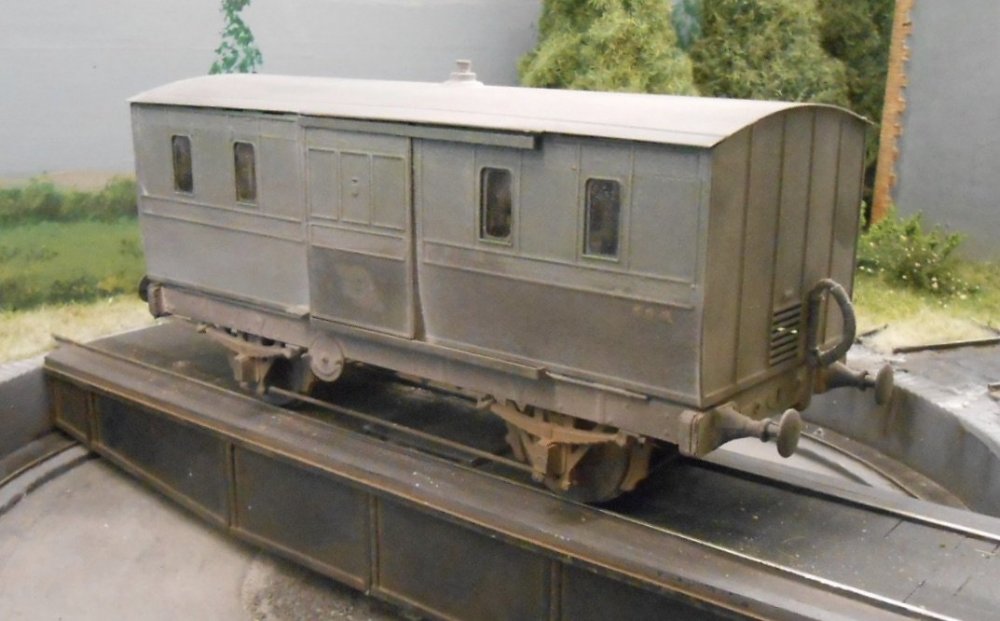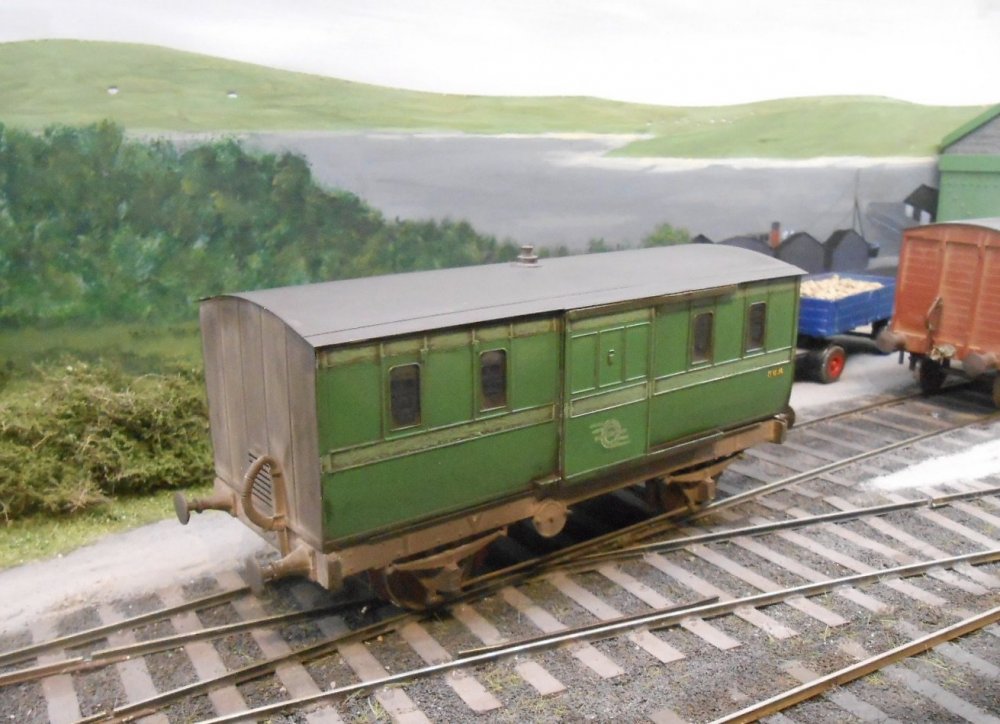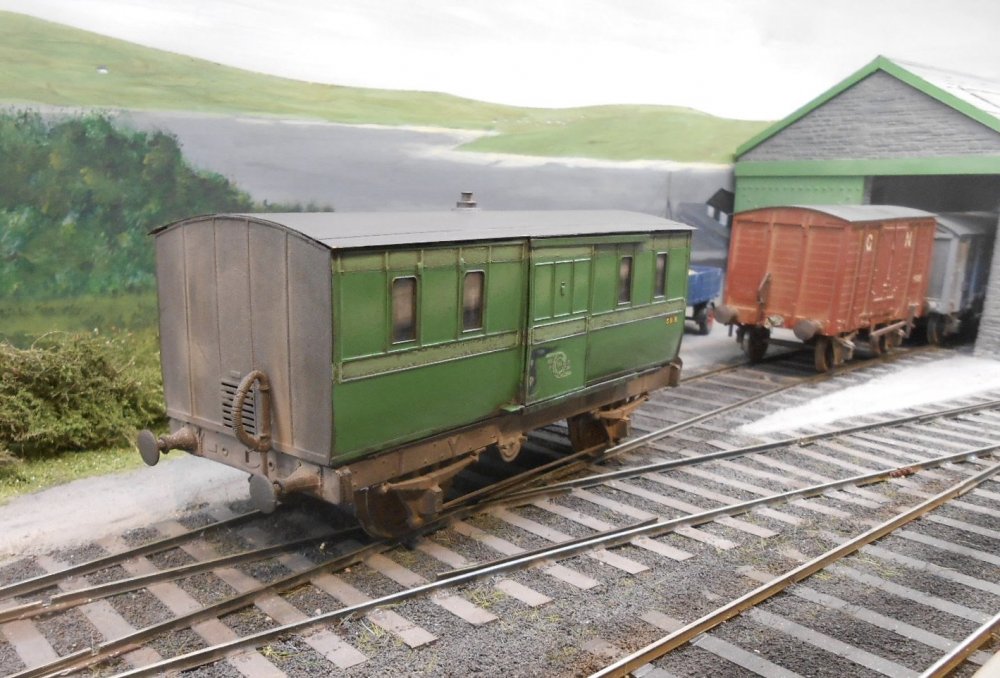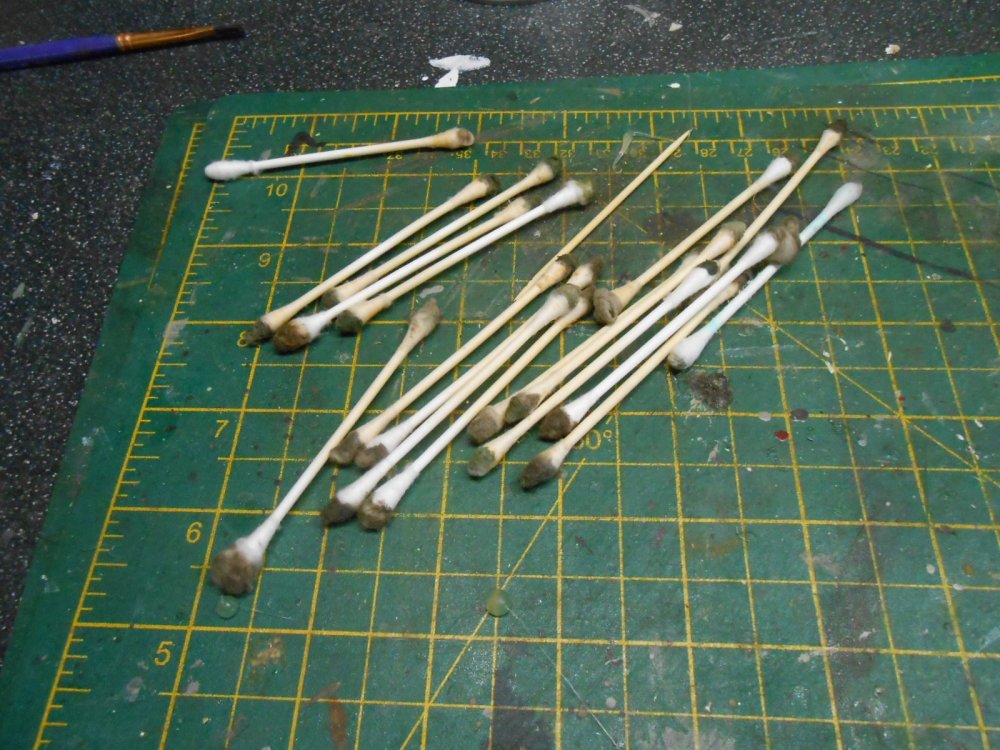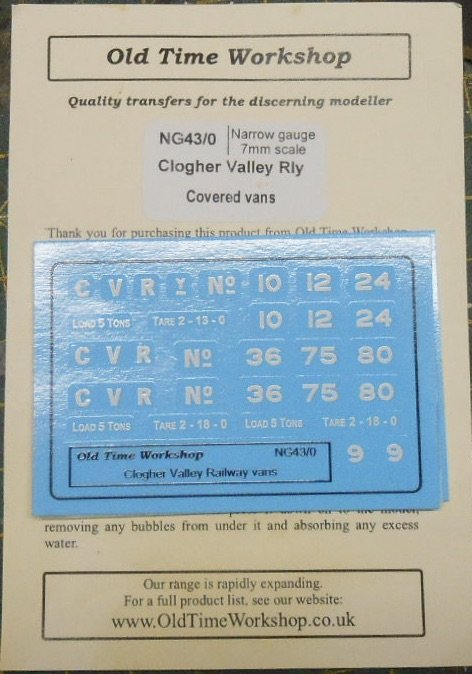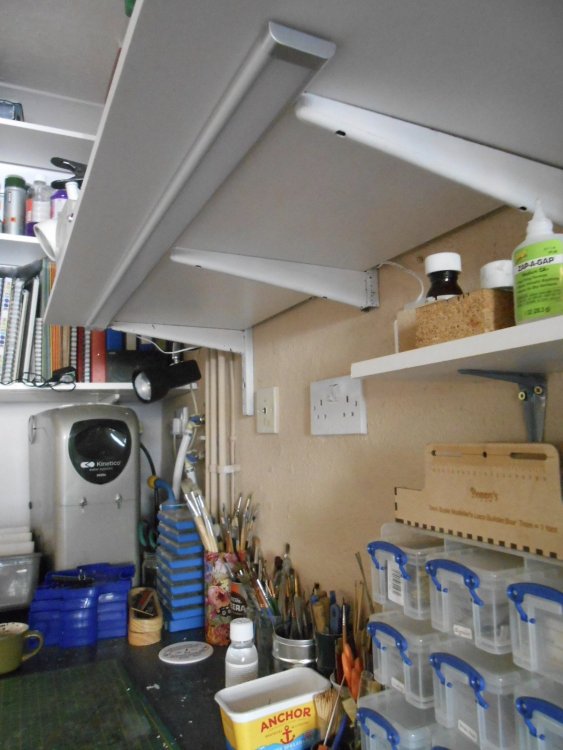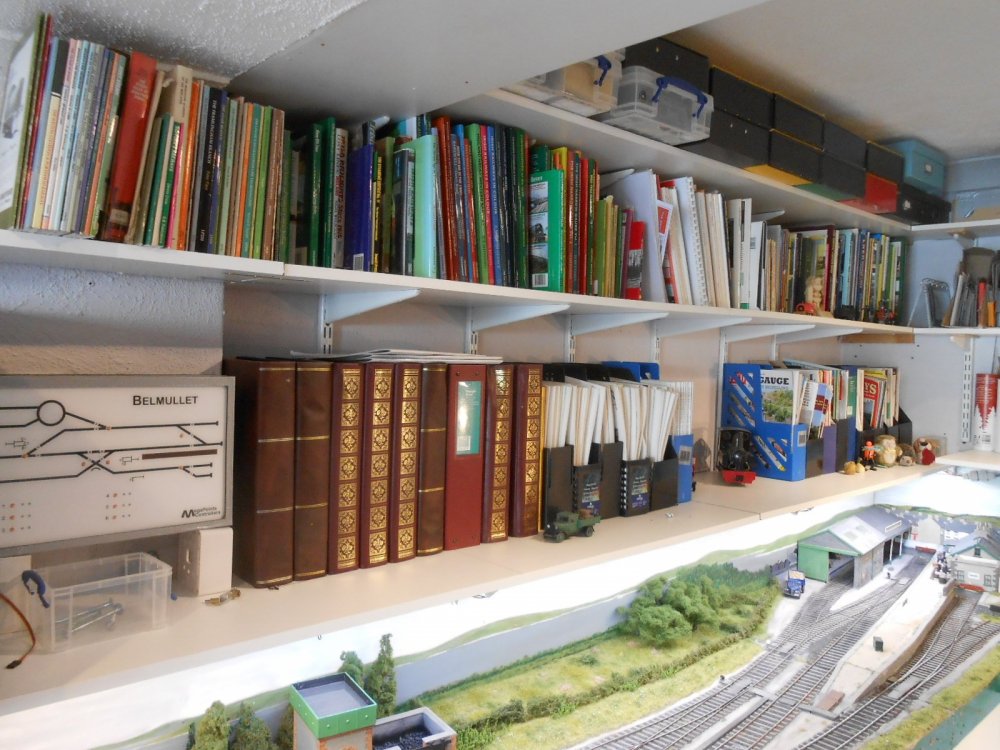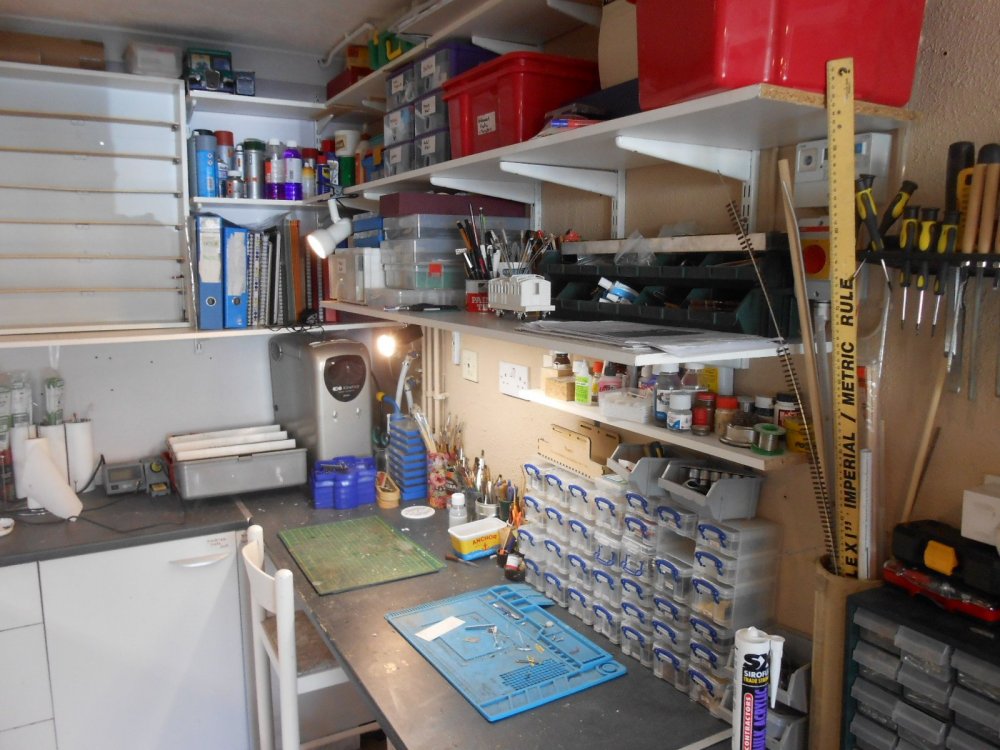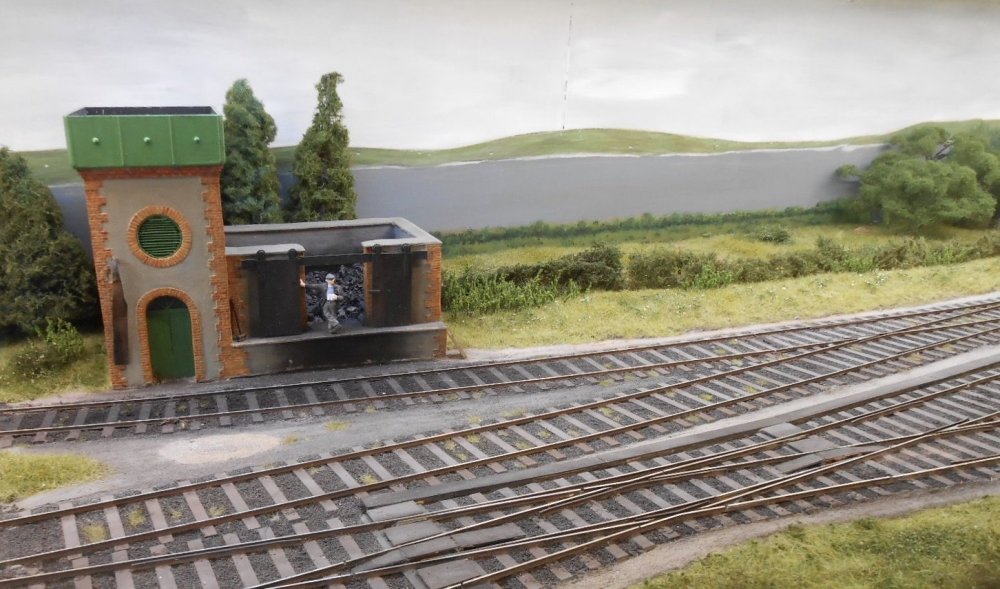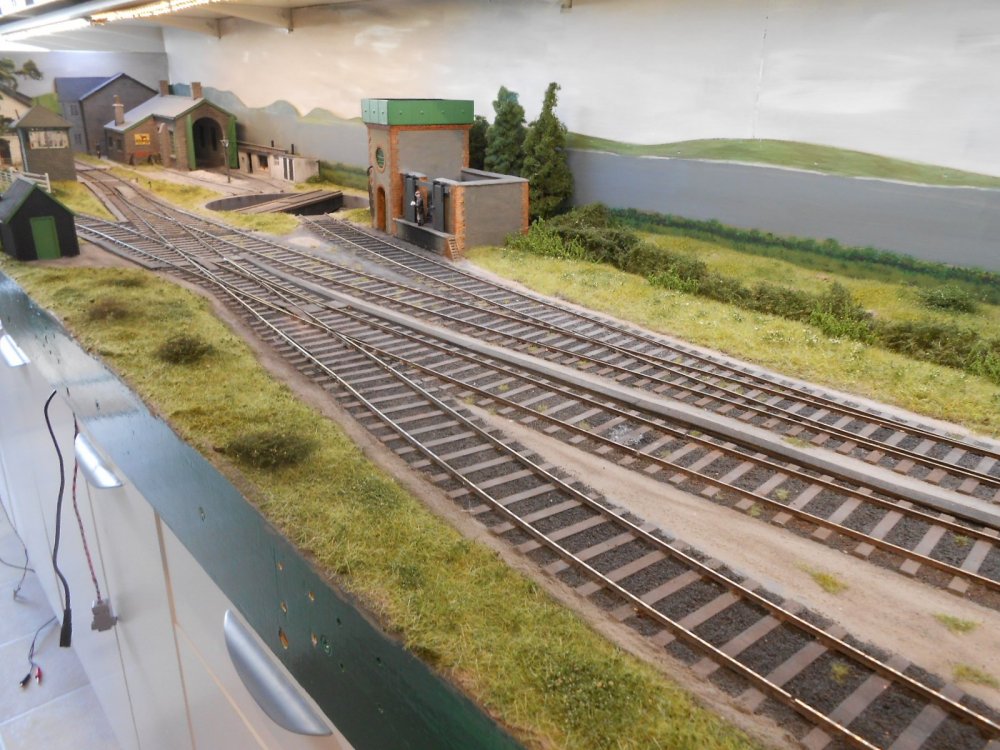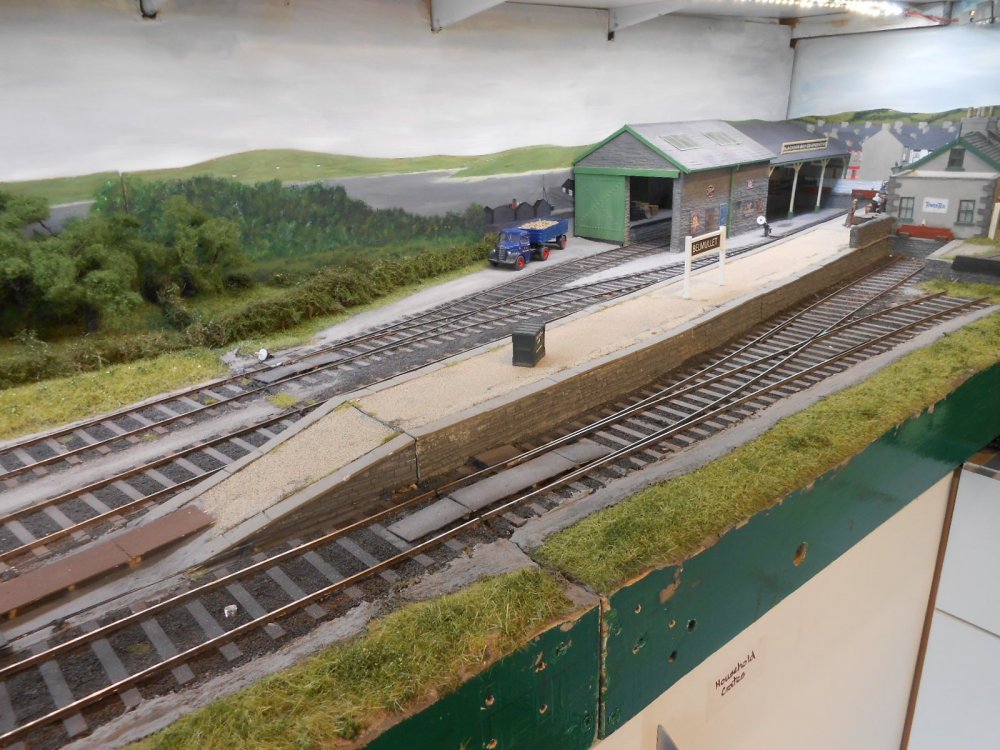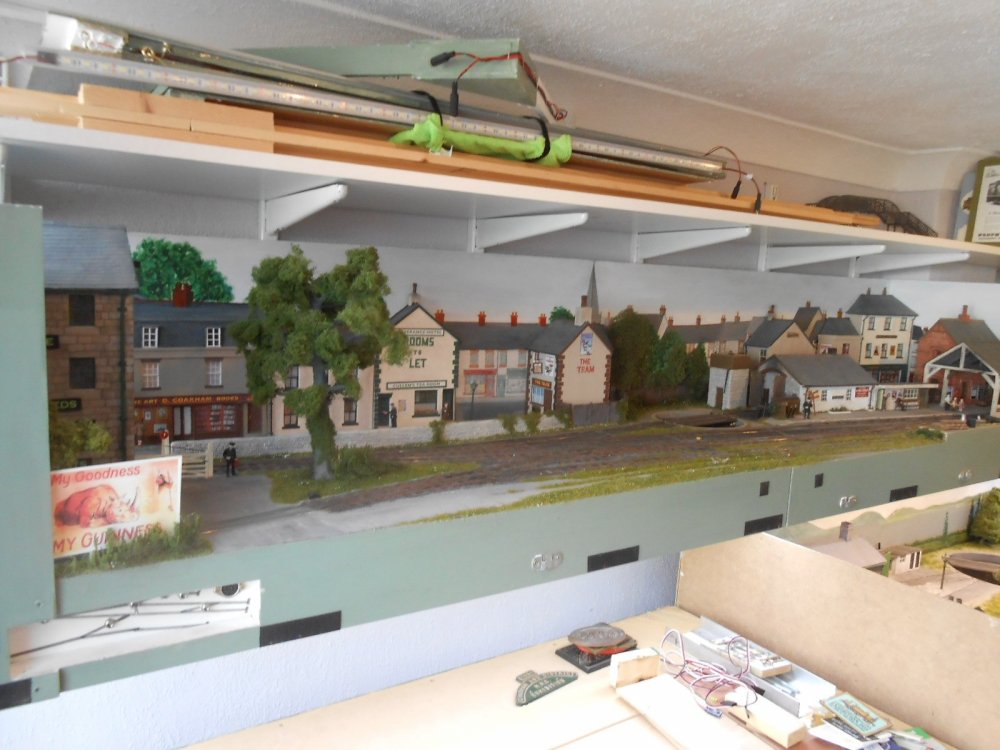
David Holman
Members-
Posts
4,338 -
Joined
-
Last visited
-
Days Won
117
Content Type
Profiles
Forums
Events
Gallery
Blogs
Store
Community Map
Everything posted by David Holman
-
Back to modelling at last After what seemed like an age doing various household chores, along with a refresh of the workshop, I was rather hoping that the MGWR 'hearse' van might have improved in my absence. Sometimes this can work - you put aside a model you're not happy with, but when you look at it again several days/weeks/months later, it turns out to be not so bad. Unfortunately in this case it was more like how wrong can you be. Indeed, when I dug the van out again, the weathering job I'd done on it looked truly 'orrible. So, what to do. First thought was to buy some paint stripper and start again, but then I remembered one of Martyn Welch's techniques for using T-cut. This automotive paint restorer has many uses and last time I got it out was to work on cleaning up Richard Chown's 'Shannon'. This time, it came in very useful in removing the 'muck spreader' effect I'd used when being way too heavy handed with the weathering. The process is fairly simple and actually quite therapeutic. Dip a cotton bud in the T-cut and then gently work away at the paint surface. Depending on how much needs removing, this may need several goes, but one aspect of rubbing away the grime is that deposits are left in all the nooks and crannies, along any beading etc - just as would happen in the carriage cleaning crew had a go at it. Fingers crossed, it now looks like an old and well worn van, where the under frame hasn't had a clean in decades, but the body panels have had a bit of a rub down from time to time, albeit none too enthusiastically. I can recommend T-cut for other paint jobs too. For example it can get rid of the 'orange peel' effect from being over enthusiastic with the airbrush and can also help reduce/remove paint 'sagging' too. Well worth keeping a bottle handy, plus plenty of cotton buds too!
-
Mark Clark - Locos n Stuff - does 3D printed models and parts to a very high standard. A Chatham Club member, have seen his work first hand and the finish is very good indeed. His website is Locosnstuff.com and well worth a look.
-
Just received some new waterslide transfers from Old Time Workshop. Met proprietor Simon Thomas in an earlier era [ie at a model show] & he was keen to broaden his range to include CVR wagon decals. Each pack costs £6.40 and in that you get enough for six wagons. Does 4mm scale, 00n3 too, including West Clare. Haven't applied them yet, but they certainly seem very nice.
-
Freelance Mixed Gauge - Handbuilt Trackwork
David Holman replied to RichL's topic in Irish Model Layouts
Very impressive! Don't know how the comparison works in 4mm scale, but in 7mm, handmade track is certainly no cheaper than ready made, as the cost of materials is high. Substituting card or ply sleepers helps though. At the risk of digressing, scratch building per se is not necessarily a cheap option either. Take, for example a 7mm scale wagon. Wheels around £10, cast buffers £5, W irons, couplings and brake gear the same. Hence £25 on bits before you even start on the body. Given Dapol RTR wagons start at as little as £30, it can make you wonder - but then as someone said earlier, for those of us who enjoy making things, that is the whole point of the exercise. The photo above says it all. Break a project down into small steps and suddenly it is not so complicated, though suspect there might be a bit of brain ache in working out where all the insulation gaps go! -
Freelance Mixed Gauge - Handbuilt Trackwork
David Holman replied to RichL's topic in Irish Model Layouts
C&L do point kits and also prefabricated vees and blades. The kits comprise everything you need to build a point using just plastic solvent. Stick sleepers to the plan, slide the chairs on to the rail, fix the chairs to the sleepers with Daywat or similar and Robert is your father's brother. Only available for bull head rail, but they do the correct slide chairs and so on. A 21mm gauge is all you need to change to 5'3 as sleeper lengths are the same. Can be built in an hour or so once you've got the hang of it and if you buy the components rather than the kits, then you can configure any formation you like. Built several for a 7mm project and they really work well. Include complex stuff like single and double slips too. -
Nostalgia ain't what it used to be!
-
It's been a while, but the workshop makeover is getting there at last. Decided to repaint the walls and ceilings, so it was a real Chinese puzzle to move the various elements around without [much] stuff invading living area of the house. Though not a great deal has changed, hopefully what has been done will make life easier: Shelving has been tidied up and now is mostly at the same height around the whole workshop Lighting has been changed to LEDs - both on the layout and the workbench, so in future I'll be painting under the same light as I display/exhibit What's on the shelves has been moved round, to improve access, while all the bits and pieces, tools etc have been likewise re-organised for the same purpose. Electrics for Belmullet have similarly been improved, with the control panel now on the shelf above and track/magnet/lighting transformers grouped at one end. There is now a better back scene to Belmullet, with 'skyboards' added, behind the land and sea back scene. Fintonagh has swapped places with the magazines/book shelves, so the latter are all together for reference purposes Still some more tidying up to do, not least getting the layout running again, but hopefully can get back to some modelling again soon. Hopefully the photos will enable changes to be seen - but no prizes for spotting anything I've not mentioned!
-
Freelance Mixed Gauge - Handbuilt Trackwork
David Holman replied to RichL's topic in Irish Model Layouts
Great to see so many people coming to 5'3. Not that long ago, Andy was the only person doing 4mm/21mm gauge, so with Ballyconnel Road in 3mm and Arigna Town in 7mm, that was about it for exhibition layouts especially following Richard Chown's sad demise and Paul Green's S layout no longer on the circuit either. If we ever get back to having exhibitions again, a whole show of correct 5'3 and 3' gauge layouts could well be possible. now there's a nice thought! -
Guessed as much! Either way, certainly hope the Donegal project can prosper. Wasn't open when I visited in 2013, but could still tell it was a very good museum and hope to get back one day.
-
Better than nothing I guess, but given what has been done at the Arigna Mining Experience (really well done), am hoping for much better.
-
Visited Finntown seven years ago and had a ride on the Donegal Railcar, 18 I think, so that bit of the Glenties branch was very much alive. However, a 5mph speed limit did not off much excitement!
-
Looks like it! Inside there is also a photo of a contractor's loco on the C&L.
-
6mm birch ply by far the best in my experience, though if a home layout then traditional softwood frame and chipboard top will do. Avoid 'hardwood' ply at all costs unless at least 9mm thick
-
What about the Finn Valley Railway? Home territory, track etc in place, albeit needing run round loops, though guess there are other factors, or it would already have been mentioned.
-
While the right thing to do, we can only hope that someone (s) will have the wherewithal to set up a museum of Turf, complete with working railways. As a key part of Irish industrial heritage, something needs preserving, you'd hope.
-
Do I have to glue the cork underlay to plywood baseboard
David Holman replied to Bill Paddy Andy's question in Questions & Answers
For me, using a cork base is more about forming the correct ballast shoulder as any sound proofing. Hence often do away with it on station and yard areas, where you would otherwise be covering the whole baseboard surface with cork. That said, 3mm cork floor tiles are great for this, being completely flat and thick enough to cut channels for wire in tube point rodding and the like. -
That overall roof really is quite something, but have been running our of superlatives for a while now.
-
Freelance Mixed Gauge - Handbuilt Trackwork
David Holman replied to RichL's topic in Irish Model Layouts
Really fine work and love the thinking with the gauges. My 21mm roller gauge was turned up by a friend at the model club - never thought about simply adapting an existing one... -
Couldn't find this mag in WHS, but did find a similar publication called Wheels of Industry, where there are four pictures of Larne aluminium works locos. However at ten quid, you'll probably need a wider interest in all things industrial. A decent article on Aveling and Porter locos persuaded me to part with the cash, plus another one on crane tanks. Not that I'm about to build either, but do find such things interesting.
-
Appears to be some more than decent track laying going on here, with a really nice flow to things and spacers used to keep adjoining lines parallel.
-
Freelance Mixed Gauge - Handbuilt Trackwork
David Holman replied to RichL's topic in Irish Model Layouts
My Fintonagh layout, though 7mm scale, is 3' gauge on 21mm track to EM standards with 1mm flangeways. Has done over a dozen shows with no major running problems. I downloaded point templates from Templot. These were labeled as Irish EM and 20.2mm gauge, so simply enlarged them on the copier to 21mm. As for layout names, with tongue firmly in cheek have previously considered things like Killyconcarney, Ballerina and, my favourite, Ballyshawbeaghan - think zebra crossings! -
Been tempted by the Sentinel, as could be a very quick fix to 36.75mm. Unfortunately the absence of shows means have yet to see one and check if it just a case of moving wheels out to you he correct gauge. If so, something like the Limerick market in branch would make an interesting little shunting puzzle, with just a couple of points and a few wagons.
-
Indeed! However, rather like Tyrconnel kits, 32mm gauge does not translate well to 36.75 where splashers are concerned, though at least there are only two to worry about. Equally, seem to remember reading that when converting the Jinties to 5'3, they had to skim the driving wheels to make them fit inside the splashers. Nevertheless, Jim's kits are superb and you only have to look at the website to see he tells you the total cost, including wheels, motor and gears, something other kit makers could follow methinks. Guess the main reason we don't see (m)any of them is their work rarely, if ever took them outside the docks or York Road, though am sure someone will enlighten us on that. Would still make for a nice shunting layout though!
-
Dare I say it would be a pain to regauge, especially as the prototypes were a challenge themselves.
-
Maybe it's just me, but I continue to find it remarkable that Mayner, in New Zealand is first to flag up news from County Clare. Such is the power of the Web in enabling us to share knowledge - even if not all of it is interesting like this.
.png.c363cdf5c3fb7955cd92a55eb6dbbae0.png)
